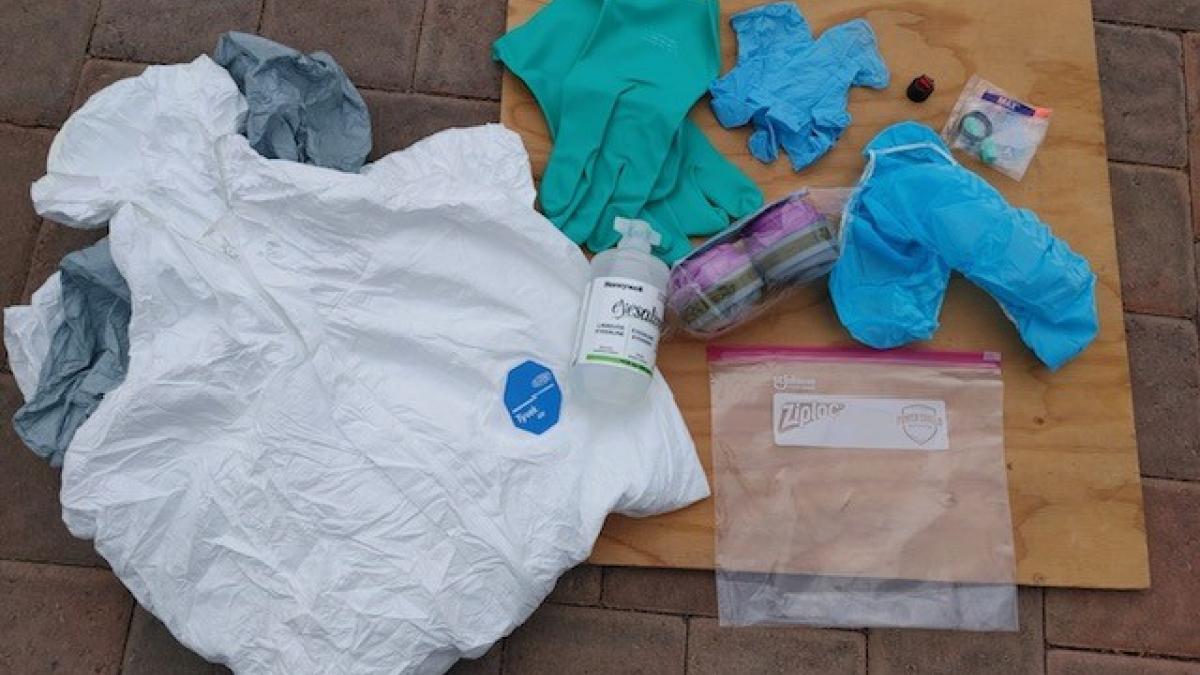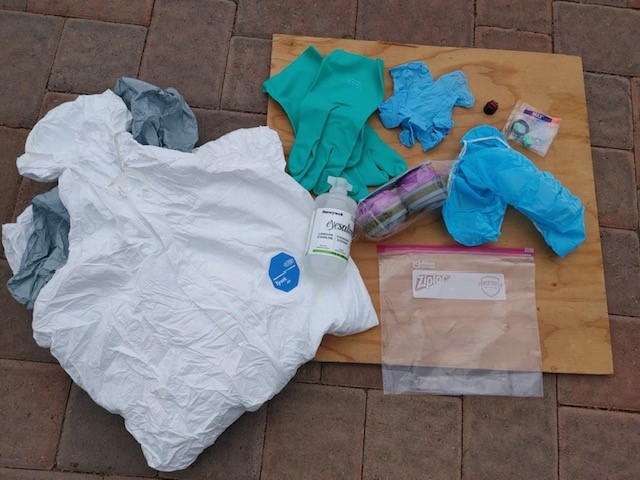
Photo by: Kit Galvin
 Take note
Take note
Having an extra set of PPE available prevents contamination of the inside cab. A similar bag can be used to store spare PPE and overalls at an emergency decontamination station.
 Supplies
Supplies
- Resealable plastic bag
- Thin and thick nitrile gloves
- Chemical-resistant boot covers
- Emergency eyewash (1 pint)
- Respirator cartridge for the pesticide being applied
- Earplugs
- Extra nozzles
- Chemical resistant gloves
- Clean PPE suit
- Plastic garbage bag for contaminated PPE
 Idea...
Idea...
A manager thought of using the plastic bag to store PPE supplies because he realized that the inside of the tractor cab could be contaminated when handlers return to the cab after cleaning nozzles.
 Setup & use
Setup & use
- Keep a complete set of emergency supplies in cab.
- Handler training: Before exiting the tractor cab:
- Put on earplugs and chemical resistant boot covers.
- Put eyewash in an easy-to-reach location.
- Lay out clean gloves and open garbage bag.
- Handler training: Before re-entering the tractor cab:
- Remove contaminated PPE and gloves and put them in the garbage bag.
- Put on clean PPE.
 Alert
Alert
Be careful not to contaminate the inside of the cab whenever you leave the cab during applications.
 Tips
Tips
- Use a small container with a tight-fitting lid in place of a plastic bag.
- Dispose contaminated PPE as hazardous waste.

Worker Protection Standard
Federal Code of Federal Regulations
We hope that you will be inspired you to incorporate solutions into your own training style, develop your own hands-on teaching tools, or discover new practical solutions. We hope that you are inspired to use these solutions in your workplace. Did you try one of the practical solutions or develop a new one? We would appreciate hearing about your ideas and experiences.
Thank you and safe pesticide handling,
PNASH
Contact your state agency for more information on WPS regulations. The content of this website is for informational purposes only. It may need modification to fit your needs or it may not be appropriate for your workplace. Safe use of these solutions is your responsibility. The University of Washington and the Pacific Northwest Agricultural Safety & Health Center is not responsible for any loss or damage resulting from the use of the information provided on this website.
PNASH Project 2016-2021 (CDC/NIOSH Cooperative Agreement # U54 OH007544)
Contact us
Project Email:
PractSol@uw.edu
Project staff:
Maria Tchong-French (habla español)
206 685-6728
